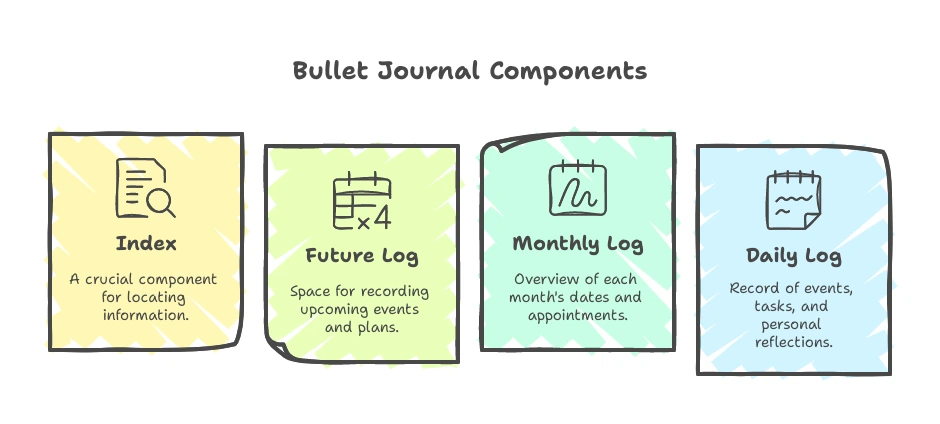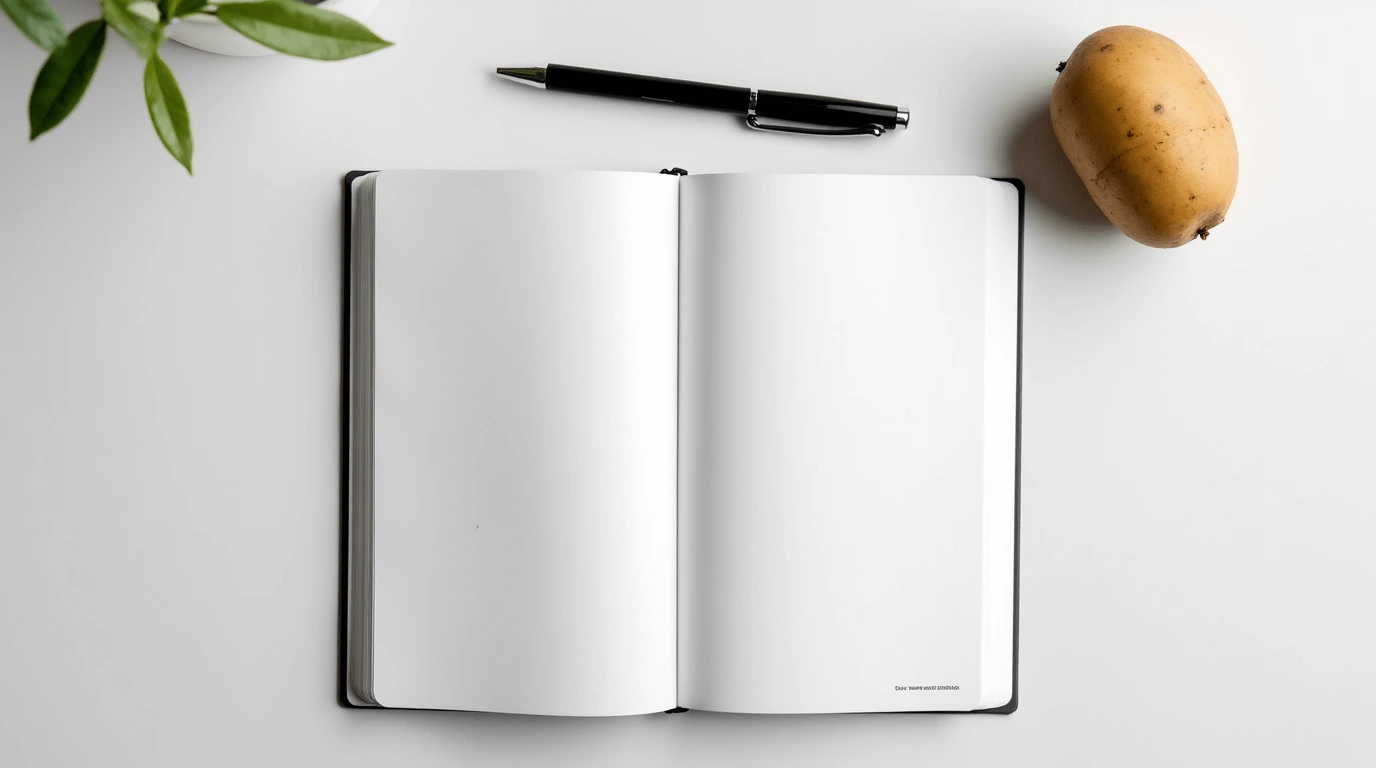Table of Contents
What Makes Bullet Journaling Unique?
Think of a Bullet Journal as a potato – seemingly simple, yet capable of becoming whatever you need it to be. This analog system has revolutionized personal organization by offering something our digital world often lacks: true flexibility combined with mindful engagement.
The Power of Pen and Paper

Research featured in “The Reading Brain in the Digital Age” reveals that writing by hand engages our brains differently than typing on screens. When we put pen to paper, we activate deeper thought processes and create stronger neural connections.
Essential Components of Your Bullet Journal

The Basic Tools
While your smartphone remains an invaluable tool, the Bullet Journal serves as its perfect complement. Getting started requires just two items: a notebook and a pen.
The Core Structure
The Index
Think of it as the “fat” that makes everything work smoothly. This simple yet crucial component helps you locate information within your journal effortlessly.
The Future Log
A dedicated space near the front of your journal for recording upcoming events and long-term planning.
The Monthly Log
Offers a clear overview of each month’s dates and corresponding weekdays, where you’ll transfer appointments from your existing calendar.
The Daily Log
Becomes the heart of your practice, serving as a stream-of-consciousness record of events, tasks, personal reflections, and memories.
Best Practices for Bullet Journaling

Avoid Common Pitfalls
One common mistake for beginners is attempting to recreate the elaborate designs often seen on social media. Remember, your Bullet Journal doesn’t need to be an artistic masterpiece.
Keeping It Simple
- Use basic signifiers (boxes for tasks, triangles for appointments, dots for notes)
- Create collections only when needed
- Stick to simple embellishments
Advanced Techniques
Migration
The process of reviewing and transferring unfinished tasks and important events to the next month helps identify what truly deserves your continued attention.
Threading
This clever page-numbering technique allows you to connect related information across non-consecutive pages, creating a web of interconnected thoughts and plans.
Customization and Adaptation
Making It Your Own
The calendar system within your Bullet Journal should reflect your personal perception of time. Some prefer traditional monthly layouts, while others thrive with weekly or even daily focuses.
What to Include (and What to Leave Out)
Not everything needs to find a home in your Bullet Journal. Many users keep certain elements separate – grocery lists, meal plans, or brainstorming sessions might live in a different notebook entirely.
Monthly Setup and Maintenance
Establish a routine for setting up each new month:
- Create the next month’s calendar
- Transfer relevant events
- Update your index
- Adjust your system as needed
Getting Started
Recommended Tools
- Leuchtturm 1917 notebook
- Pilot Precise V5 pen
Core Principles
Remember the three key principles:
- Slow
- Simple
- Soulful
Conclusion
The Bullet Journal method could genuinely change your life through its fundamental principles of mindful organization and personal adaptation. Start with the basics, let your system evolve naturally, and discover how this analog method can bring clarity and purpose to your digital life.

